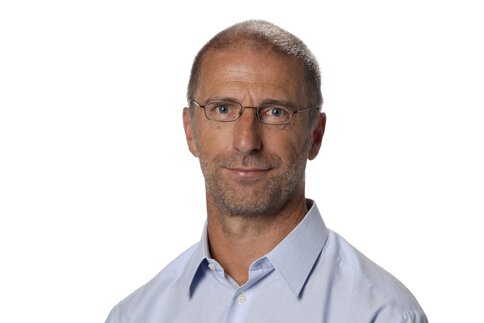“Use of AI is almost ubiquitous”
Prof. Ronald Sroka, Scientific Director of the Laser Research Laboratory at the University Hospital of Munich and Director of the European Conferences on Biomedical Optics (ECBO) 2023, talks about the ubiquitous use of artificial intelligence in an increasingly multimodal and markerfree imaging, photonic solutions for sustainable agriculture, and the highlights of this year's ECBO.
What are the focuses of ECBO 2023?
In the presentation submissions, we see very clearly that the long-discussed translational effect has now set in: more and more photonic methods are finding their way from research into medical practice. Consequently, “Transitional Biophotonics: Diagnostics and Therapeutics”, moderated by Professor Lothar Lilge from Canada is the largest of our six sub-conferences within the framework of the ECBO. The submissions also very clearly illustrate the focuses in terms of content. The use of artificial intelligence and deep learning is almost ubiquitous. On the one hand, they are used to evaluate data, but, on the other hand, they are also used to help select the relevant image data and image sections. An equally consistent theme in our program is imaging without the addition of markers. For a long time, we used photosensitizers, in other words, contrast agents to detect tissue contrasts. But now, there is a clearly recognizable trend towards optical processes that do not require markers. For example, optical coherence tomography (OCT), the combination of light excitation and ultrasound detection in photoacoustics, Raman spectroscopy and also multispectral and hyperspectral imaging. All of these procedures are imaging, insanely fast, and provide findings even relatively deep in the tissue. There are many presentations that connect these methods to form a multimodal imaging system or combine them with endoscopy in terms of minimally invasive diagnostics. Multimodal imaging in combination with artificial intelligence is a theme that runs like a red thread through the ECBO 2023. Scientific debate is important at our conference. With the growing diversity of procedures, a shortcoming becomes apparent that hinders implementation in medical application: there are no binding optical standards or references. Comparability and interoperability between the procedures and equipment from the different manufacturers is still not optimal.
Are there currently any fascinating technology trends in your segment of photonics?
There are a few interesting trends. Initially, biophotonics was about understanding the exact processes in the body and at the cellular level. Next, the focus was on identifying illnesses and finding ways to treat them. The ECBO expands this application spectrum to the environment and food. We now see health more holistically; in other words, we look at the bigger picture. One example of this is sterilization. For instance, in fruit orchards, there are approaches to use photosensitizers instead of herbicides, which provide protection activated by sunlight to the plants and fruits. In barns, photonic procedures can also help reduce the use of antibiotics. Implants and medical equipment can also be sterilized with purely optical methods. For example, with UV or IR wavelengths or with photodynamic processes. In each case, this requires prior analysis of which pathogens are involved and which methods and wavelengths can be used to kill them most efficiently. The “Diffuse Optical Spectroscopy and Imaging” conference reflects another trend: optical detection of tissue perfusion. There are various methods than can be used for this, which, integrated into wearables, enable continuous health monitoring. This can be very useful in sport, home care and also for monitoring the efficacy of drug therapies and for early diagnosis. Other fascinating fields include the purely optical, non-invasive monitoring of neural processes in the brain and monitoring of depolarization processes to interpret cellular and vascular properties. This could be useful, for example, to identify resistances. I could list several more fascinating trends which show the dynamism and wealth of ideas of biophotonics and our conference.
At your conference will there be highlights that you wish to draw the LASER community’s attention to?
From a professional aspect, the two plenary talks from Melissa Skala from the University of Wisconsin (USA) about fluorescence lifetime imaging and from YongKeun Park from KAIST in South Korea about holotomography are highlights. Both speakers will discuss the use of AI in their area of expertise—and describe very interesting imaging procedures without contrast agents. A good overview of the conference topics is also provided by our Hot Topics Sessions in the form of somewhat more detailed appetizers for all six conferences. Here, I can recommend the session with Irina Larina from Baylor College of Medicine (USA), who used OCT to visualize ovulation cycles in small animal models. We invited her to our hospital and her presentation absolutely fascinated my colleagues from reproductive medicine and gynecology. But against the backdrop of the long pandemic phase and increasing global tensions I would especially like to promote our social and networking events. Direct conversation over a snack, person-to-person exchange is more important than ever. We will come together here in Munich and should make use of the opportunity to strengthen collaboration among the international scientific community. The challenge is to deal with each other in a human way, away from the big politics. Science unites. And it provides what is now often lacking in politics: objective, scientifically validated facts that contribute to the progress and wealth of knowledge of humankind. It is an honor to work in this field—especially since the population of our country provides us with the means to do so. Therefore, we should make use of the World of Photonics Congress to talk with each other during poster sessions, coffee breaks and networking events.
Find the program and all special events of ECBO 2023 here.

